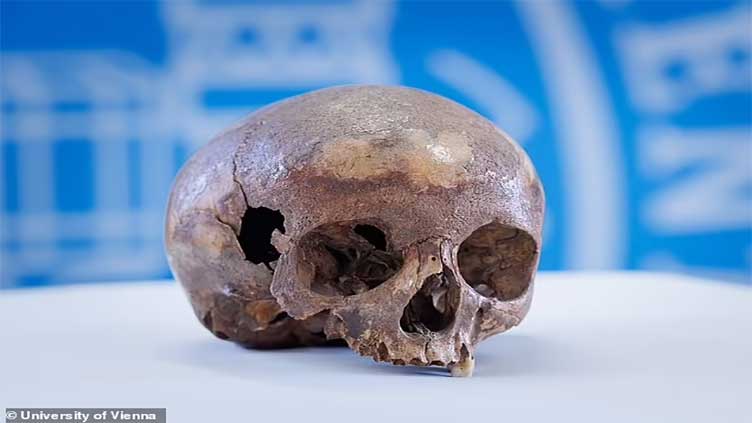Scientists solve mystery of 'Cleopatra's sister' skull

Technology
Results show the body actually belonged to that of a boy
(Web Desk) - Nearly 100 years ago, an ancient Egyptian skeleton was found in the Octagon, a stunning eight-sided mausoleum in the ancient Greek city of Ephesus.
For decades, scientists had identified the skeleton as that of Arsinoe IV, the doomed half-sister of Cleopatra VII, one of Egypt's most famous queens.
But a groundbreaking new analysis by researchers in Austria reveals a 'big surprise' – and a remarkable case of mistaken identity.
Results show the body actually belonged to that of a boy, aged between 11 and 14 at time of death sometime between 205 and 36 BC.
The boy suffered from 'pathological developmental disorders' including an 'underdeveloped upper jaw' which would have made it difficult to chew, experts say.
However, researchers do not know much about who the boy was, while it also means the remains of Cleopatra's half-sister are still missing.
'The person buried in the Octagon was not Arsinoe IV, and the search for her remains should continue,' say the academics, from the University of Vienna.
'The fate of the body of Arsinoe IV, who reportedly was killed in 41 BC in Ephesos, remains open.
'In contrast, investigations regarding the fate and social background of the boy from the Octagon can now proceed free of speculation.'
The incredible saga dates back to 1929, when Austrian archaeologist Dr Josef Keil and his colleagues found a sarcophagus completely filled with water in the ruins of the once magnificent Octagon.
Dating back to the late 1st century BC, the Octagon was a monumental eight-sided white marble mausoleum, around 40 feet (13 metres) high.
Dr Keil – who took the skull for analysis but left the rest of the body – concluded it was that of 'a very distinguished person', probably a 20-year-old woman.
Further studies in the early 1950s and a study of the skull and the rest of the body in the 1980s also concluded it was that of a female.
But archaeologists continued to speculate about the identity of this 'obviously notable person', as well as the reliability of the conclusions.
Rival experts said evidence linking the bones to Arsinoe had been largely circumstantial, while even the researcher who found them admitted they'd been handled too many times to get a reliable DNA test result.
To provide an answer, the University of Vienna team performed morphological, genetic and dating analyses of the cranium – the part of the skull that directly houses the brain.


